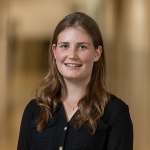"How can we increase the lifespan of satellites in low earth orbit without fuel?" said CRC spokesperson Professor Stefanos Fasoulas as he welcomed space enthusiasts from research and industry to the event. This is the central research question of the new ATLAS (Advancing Technologies of Very Low Altitude Satellites) collaborative research center (CRC) at the University of Stuttgart. "Our vision for the CRC is to create the scientific basis for exploring low Earth orbits."
"The idea of the sustainable use of low earth orbit has enthralled me from the very beginning," announced Rector Wolfram Ressel at the launch event. "A Transregio and a CRC based within a single faculty is a rare and remarkable achievement. This is a proof that outstanding research is being carried out at our university."
Learning to understand and master environmental conditions in space
The atmospheric conditions in very low Earth orbit (VLEO), 200 to 450 kilometers above the Earth's surface, have been little researched, and methods and technologies to control them are still lacking. This is where the CRC comes in: "At 500 kilometers and upwards, there are now tens of thousands of satellites. It is slowly getting full up there," says Fasoulas. "A sensible alternative is to come closer to the earth."
"The area is rougher, but it also offers new opportunities for research missions," adds Sabine Klinkner, Professor of Small Satellite Technology at the Institute of Space Systems (IRS). Satellites in VLEO can be smaller and lighter, can be put into orbit at lower cost and are able to deliver data with higher resolution and less time delay.
Avoiding space debris through the self-cleaning effect
The aim of the CRC is to extend the service life of satellites and enable them to maintain their orbits under their own power. To this end, the researchers are optimizing plasma engines that use residual atmosphere as fuel. Another effect of the residual atmosphere is its self-cleaning effect - there would be no space debris left behind. "We are already experiencing the risk of collisions," says Klinkner. "Our small satellite Flying Laptop has recorded around 700 collision warnings between 1000 and 29 meters in the last six years." If a system failure occurs in VLEO, satellites are slowed down by the residual atmosphere and burn up within two to three months.
Technologies for the international aerospace industry
With its interdisciplinary research initiative, the CRC follows the course of Baden-Württemberg's aerospace strategy THE Aerospace LÄND, but the technologies developed are to be used in international space travel. For example, a simulation tool that engineers can use to plan maneuvers in space and determine the required thrust and the effects of the satellite design on the trajectory.
A look behind the scenes
In the satellite control room at the Space Center on Campus Vaihingen, students and scientists demonstrated how they bring satellites, such as EIVE, into operation and monitor satellite missions in space. During an EIVE overflight at 13:33, observers witnessed the live transmission of new commands to the satellite, as well as the satellite sending data on its technical status, including temperature and battery charge, back to the ground station. During a guided tour of the plasma wind tunnel laboratory, the researchers explained how they simulate re-entry and develop new propulsion technologies for space.
In January 2025 the CRC will hold a scientific symposium on progress and challenges in VLEO. There are currently still vacant PhD positions for ATLAS projects.
In the program "SWR Wissen aktuell - Impuls, Kultur" [de] Professor Stefanos Fasoulas talks about the goals of the CRS ATLAS and explains why satellites in low earth orbit are important for space travel and how the researchers make use of the characteristics of the VLEO.
About Atlas
The Collaborative Research Center 1667 „Advancing Technologies of Very Low Altitude Satellites“ (ATLAS) has been receiving funding from the German Research Foundation (DFG) since April 2024, and this funding will continue for four years. The CRC is designed for a total period of twelve years. Under the leadership of the University of Stuttgart, 23 sub-project leaders from 13 university institutes and the Institute of Technical Physics at the German Aerospace Center (DLR-TP) are involved. The interdisciplinary research network also receives support from non-university partners from research and industry, such as the European Space Agency (ESA), Stuttgart-based Astos Solutions GmbH and Luleå University of Technology in Sweden.

Jacqueline Gehrke
Online Editor


